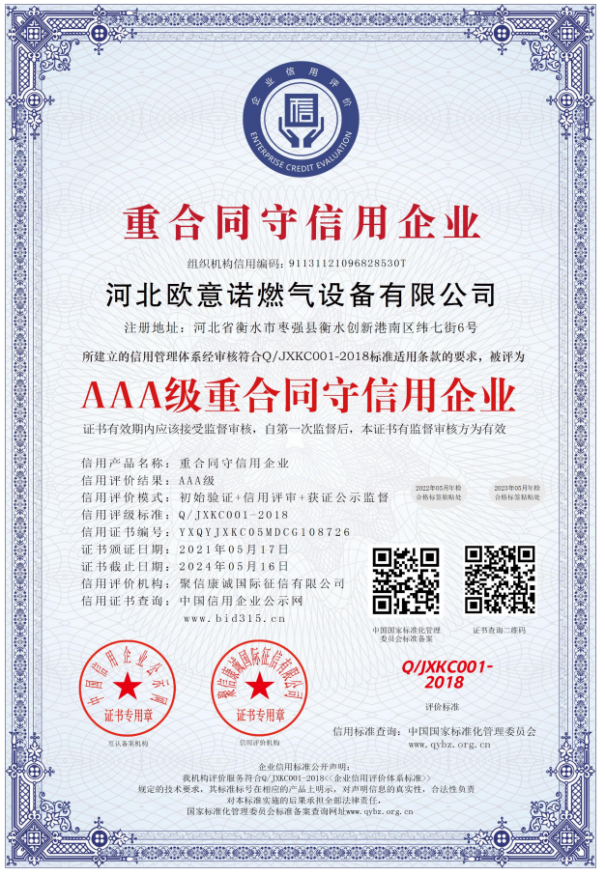
Nov . 30, 2024 09:50
Back to list
Understanding High Pressure Regulators and Their Applications in Various Industries
Understanding High Pressure Regulators Essential Tools for Safe and Efficient Gas Management
High pressure regulators are critical components in various industries where precise control of gas pressure is essential. These devices are designed to reduce and regulate high pressure gases to a lower, manageable level. Understanding how they work, their applications, and the importance of proper maintenance can ensure safety and efficiency in operations involving gases such as oxygen, nitrogen, or natural gas.
How High Pressure Regulators Work
At their core, high pressure regulators function by controlling the flow of gas from a high-pressure source, such as a gas cylinder, to a predetermined outlet pressure. The primary mechanisms involved include a diaphragm, spring, and valve. When gas enters the regulator, it acts against a diaphragm that responds to pressure changes. If the outlet pressure exceeds the set level, the valve closes slightly, reducing the gas flow. Conversely, if the outlet pressure drops, the valve opens to allow more gas through. This feedback loop enables regulators to maintain a consistent outlet pressure even as the inlet pressure fluctuates.
Types of High Pressure Regulators
High pressure regulators come in various designs and configurations, each tailored for specific applications. Some common types include
1. Single-Stage Regulators These models are designed for applications where inlet and outlet pressures remain relatively constant. They are typically used in smaller systems where precise control is less critical.
2. Two-Stage Regulators Featuring two separate stages of pressure reduction, these regulators are ideal for applications with variable inlet pressures. They provide more stable outlet pressure and are often used in industrial settings.
3. CGA Regulators These regulators are specific to certain gas types, adhering to Compressed Gas Association standards. They include various connection types and are used for specific gases like acetylene, hydrogen, or argon.
4. High Flow Regulators These are designed to handle larger volumes of gas, making them suitable for applications involving high gas consumption, such as welding or cutting.
high pressure regulators

Applications Across Industries
High pressure regulators are extensively used in industries such as healthcare, manufacturing, and research. In medical applications, they regulate oxygen delivery systems to ensure patients receive the correct dosage. In manufacturing, they are used in processes that require precise gas control, such as welding and metal fabrication. Research laboratories utilize these regulators to maintain necessary conditions for experiments involving gas reactions.
Importance of Safety and Maintenance
Given the potential hazards associated with high pressure gases, the importance of safety cannot be overstated. High pressure regulators must be chosen carefully based on the specific gas type and application. Proper installation, regular maintenance, and testing are vital to prevent leaks and ensure optimal performance.
1. Regular Inspections Routine checks for wear and tear, leaks, and pressure settings can prevent malfunctions. Components such as gaskets, seals, and the diaphragm should be inspected and replaced as necessary.
2. Calibration Periodically calibrating the regulator ensures accurate pressure delivery. This is especially crucial in applications where precise pressure is critical for safety and performance.
3. Training Personnel working with high pressure regulators should receive training on proper usage, safety protocols, and emergency procedures. Understanding how to respond to leaks or malfunctions is crucial in preventing accidents.
Conclusion
High pressure regulators play a pivotal role in the safe and efficient management of gases across various industries. Their ability to precisely control outlet pressure makes them indispensable for applications ranging from medical gas delivery to industrial manufacturing. By understanding how these devices work, their various applications, and the importance of safety and maintenance, organizations can ensure smooth operations and prevent potential hazards associated with high pressure gases. As technology advances, the design and functionality of regulators will continue to evolve, further enhancing their effectiveness in critical applications.
Next:
Latest news
-
Safety Valve Spring-Loaded Design Overpressure ProtectionNewsJul.25,2025
-
Precision Voltage Regulator AC5 Accuracy Grade PerformanceNewsJul.25,2025
-
Natural Gas Pressure Regulating Skid Industrial Pipeline ApplicationsNewsJul.25,2025
-
Natural Gas Filter Stainless Steel Mesh Element DesignNewsJul.25,2025
-
Gas Pressure Regulator Valve Direct-Acting Spring-Loaded DesignNewsJul.25,2025
-
Decompression Equipment Multi-Stage Heat Exchange System DesignNewsJul.25,2025

